
How Marianne Williamson rises without mass media attention
Marianne Williamson is running for the 2024 U.S. presidential elections against all odds. Campaigning against sitting president Joe Biden, being ignored by mass media, and being overlooked by fellow candidates are among a few challenges she is facing. Despite all that, she managed to rise in recent polls with her progressive ideas and strong social media presence. In this article, we look at how Marianne Williamson uses social media to gain attention and get her message across to voters in a hybrid media system.
Introducing Marianne Williamson
Marianne Williamson is a 71-year-old author, political activist, and spiritual thought leader (Meet Marianne Williamson | Marianne 2024, n.d.-b). She is famously known for her role as Oprah Winfrey's spiritual advisor in the 1990s (Looker, 2023) and for her best-selling self-help book called "A Return To Love" (Mahdawi, 2023). According to ABC News (2023), Marianne Williamson ran for Congress in 2014 and campaigned for the presidential nomination as a Democrat in 2020; however, she faced defeat both times. In March 2023, Marianne Williamson was the first to announce that she would be running as a Democratic presidential candidate, a month before Joe Biden launched his re-election campaign.
This is her second bid for the White House. In 2020, she rose to fame by claiming to harness love for political purposes to defeat Donald Trump in her closing statement of the Democratic debate (Mahdawi, 2023). This, being a self-help book author and her lack of political background results in Marianne Williamson being dismissed by the political party and mainstream media. For instance, when being asked about Marianne Williamson’s campaign, White House press secretary Karine Jean-Pierre jokingly said she was “just not tracking” because she does not have a crystal ball to feel Marianne Williamson’s aura (Mahdawi, 2023). In a TikTok video that Marianne Williamson posted, she called out her fellow Democratic candidate Dean Phillips, who later joined the race in October 2023, for saying he was running against Biden because no one else does (Williamson, 2023b). She criticized Phillips for dismissing her existence in the race to the White House and for not acknowledging her as an opponent.
As of November 2023, national polls showed that Marianne Williamson was polling at 12 percent according to Quinnipiac and NBC News, and 13 percent according to Fox News (Nichols, 2023). This number was as good as the Republican female candidate Nikki Haley, who has been receiving constant praise from the press for her outstanding results. Yet, Marianne Williamson was not taken seriously by mainstream media. Despite this, she is very popular on social media, especially on TikTok, where she gains millions of views from young people who endorse her ideas and support her presidential campaign (Mahdawi, 2023).
The message
Message, or political message, according to Lempert & Silverstein (2012, p.1) is firstly “crafted out of issues rendered of interest in the public sphere”. Marianne Williamson brands her campaign as “dedicated to the people” and bases her message on Franklin Roosevelt’s values of an advanced democracy to launch an “Economic Bill of Rights” (Marianne Williamson 2024 | Official Presidential Campaign Website, n.d.). On her website, she states that the current American economic system suffers from corporate influence that only benefits the rich and claims to make fundamental changes to deliver true democratic values and help close the wealth inequality gap.
In her Economic Bill of Rights, Marianne Williamson proposes her vision of a better economy for the people by addressing people's rights to universal healthcare, free education, affordable housing, a clean environment, and most importantly, a fair and democratic government system (An Economic Bill of Rights | Marianne 2024, n.d.). The issues that Marianne Williamson identifies herself with become part of her political persona (Lempert & Silverstein, 2012, p. 2), which is a political activist who stands with the people to disrupt the status quo.
Marianne Williamson is an outsider in the political scene and she is voicing against the elites
As stated in the previous section, Marianne Williamson was not favored by mass media during her presidential run. However, she leverages this transgression that the media is putting upon her campaign by bringing the “things-in-reality” issues together with “given plot and characters” (Silverstein, 2003, p. 24) to position herself as the solution. In this sense, she produced a clear message: Marianne Williamson is an outsider in the political scene and she is voicing against the elites.
A politician's message on the other hand is also communicated through their identity (Lempert & Silverstein, 2012, p.2). In the biography section on her official website, Marianne Williamson is introduced using her first name, which makes her come across as a truthful and authentic candidate (Meet Marianne Williamson | Marianne 2024, n.d.). Moreover, she is described first as an author, before mentioning her work as a political activist. While many politicians focus on building an image of a family person on their social media channels to portray an image of being "just like you", Marianne Williamson does otherwise. To align with the message that she is producing, which is fighting for social justice, including women's rights, Marianne Williamson does not share moments from her private life in the media to prevent limiting herself to a mother/wife image. According to Marianne Williamson, it is time for changes as “politics as usual has failed us” and “the best man for the job is a woman” (Meet Marianne Williamson | Marianne 2024, n.d.).
Additionally, Silverstein (2003, p. 16) argues that this message allows audiences to form an image of the politician. The image is not only visually crafted but also can be communicated through style (Lempert & Silverstein, 2012). In videos posted on her social media platforms, talk shows, and interviews, Marianne Williamson consistently appears in business clothes and speaks calmly and confidently. Her success in delivering speeches has been proven with standing ovations from her supporters (Looker, 2023).
One of the ways in which Marianne Williamson gains support from potential voters is through big organizing
It is important to note that Marianne Williamson adopts a similar strategy of working from the bottom up as the 2020 Democratic candidate Bernie Sanders. Big organizing is based on big ideas and requires people to become part of the campaign (Bond, 2017). As such, Marianne Williamson’s official website features ways to support her campaign: donate, volunteer, or social media engagement (Marianne Williamson 2024 | Official Presidential Campaign Website, n.d.). Notably, the use of social media as a way to support her stands out.
Marianne Williamson encourages people to share on social media and engage with her social posts. Amid the mass media blackout toward her, she posted multiple fundraising videos on TikTok inviting people to donate financially to keep the campaign going (Williamson, 2023c; Williamson, 2023d). While other candidates’ social media campaigns were backed by corporate donors, Marianne Williamson relies heavily on the public. The image of an outsider and a populist who is against the corrupted system that she built has become a crucial factor in her social media campaigns that bring her short-lived popularity on TikTok.
Political message in a hybrid media system
Chadwick (2017, p. xii) describes contemporary digital media as undergoing a “chaotic transition period” where old and new types of media co-exist and interact with each other, hence the concept of a hybrid media system. The relationship between actors within a hybrid media system is characterized by adaptation, interdependence, and power, therefore, actors can “create, tap, or steer information flows in ways that suit their goals and in ways that modify, enable, or disable the agency of others” (Chadwick, 2017, p. xii). Political message in this sense is constructed across different actors.
The launch of a presidential candidate’s campaign is broadcasted on traditional media, but the politician also uses social media platforms to get it circulated, attract audiences’ attention, and generate uptake. This hybridity allows us to look at how political actors, the public, and the media interplay in the changing landscape (Chadwick, 2017, p. 5). What follows is the rising competition for attention in message politics, where visibility and popularity are central to the success of a political campaign. Popularity in the digital age can be measured and manipulated by platforms’ affordances and algorithmic computation (van Dijck, 2013, p. 13).
Within Marianne Williamson’s campaign, we see the intense usage of social media, in which message is disseminated by different actors. According to Blommaert (2020, p. 398), these actors operate as both producers and receivers of the political message. While politicians provide the message, its uptakes rely on the audiences and their interactions with the platform algorithms. By analyzing the ways Marianne Williamson’s campaign uses different social media platforms to build a community of supporters, I will answer the research question: how Marianne Williamson uses social media to gain attention and get her message across to voters in a hybrid media system.
Platforms affordances for a discursive battle
Marianne Williamson’s campaign uses the main social media platforms: YouTube, X (formerly Twitter), Instagram, Facebook, and TikTok. Currently, her TikTok channel has 6.1 million likes and her X account has 2.7 million followers (see Figure 1).
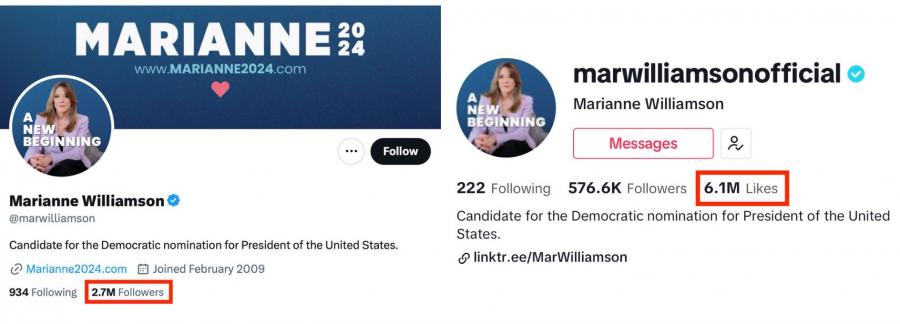
Figure 1 - Marianne Williamson's X & TikTok metadata
However, it is her intense usage of TikTok as a communicative strategy that distinguishes her from other politicians. Her political discourse on this specific platform allows Marianne Williamson to gain virality during the early phases of her campaign.
We see a common format in most videos uploaded on Marianne Williamson’s TikTok account, which is a shorter and edited version of a video clip taken from her speeches and interviews that were previously broadcast on television. This is where the hybridity of old and new media systems and their relations come into play as her content on TikTok is dependent on different actors. An example of this is a 3-minute-long video clip posted on July 1, 2023 (see Figure 2), showing Marianne Williamson’s answer to a question regarding resource distribution in the economy (Williamson, 2023e).
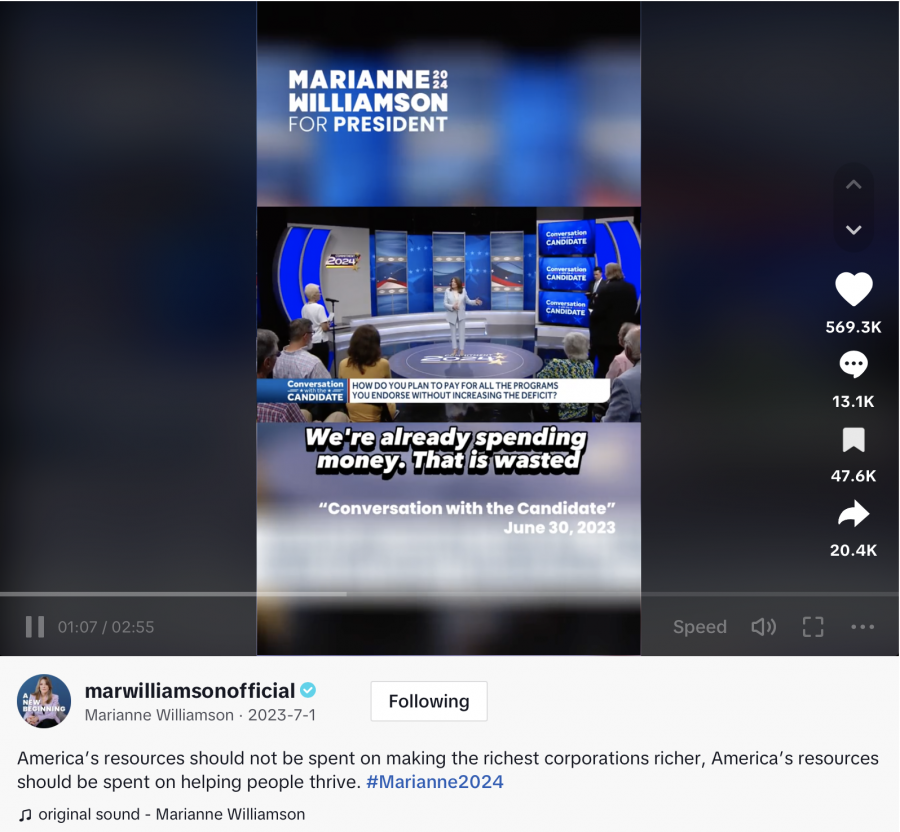
Figure 2 - Marianne Williamson on TikTok
The clip was cropped from one of her media appearances named “Conversation with the Candidate” broadcasted on New Hampshire’s WMUR News 9. At 3.9 million views, this video is the most popular on Marianne Williamson’s TikTok channel. By giving the traditional media content second exposure on social media, Marianne Williamson can gain more attention from audiences.
Another common format observed in Marianne Williamson’s TikTok videos is the reposting of content from fan accounts. Accounts with usernames like @pattipolitics, @real-politiktok, @marianne2024winner, and @mariannewilliamson4prez are among a few that are solely dedicated to promoting her campaign on TikTok. These accounts deliver content consistently and have a high number of likes, ranging from 1 million to 6 million likes.
It is the hybrid media system that allows for this new form of political discourse, where users have the power to decide what can be published, therefore steering the information flow in their favor. This enables a process that we know as entetualization (Blommaert, 2020, p. 298), in which “discourses are successively or simultaneously decontextualized and meta discursively recontextualized, so that they become a new discourse associated to a new context and accompanied by a particular metadiscourse which provides a sort of ‘preferred reading’ for the discourse”.
Figure 3 below is an example of entextualization, where a user on TikTok used the stitch function to agree with a claim made by Marianne Williamson in her original video, which says "We do not have to vote for Joe Biden in the Democratic primary".
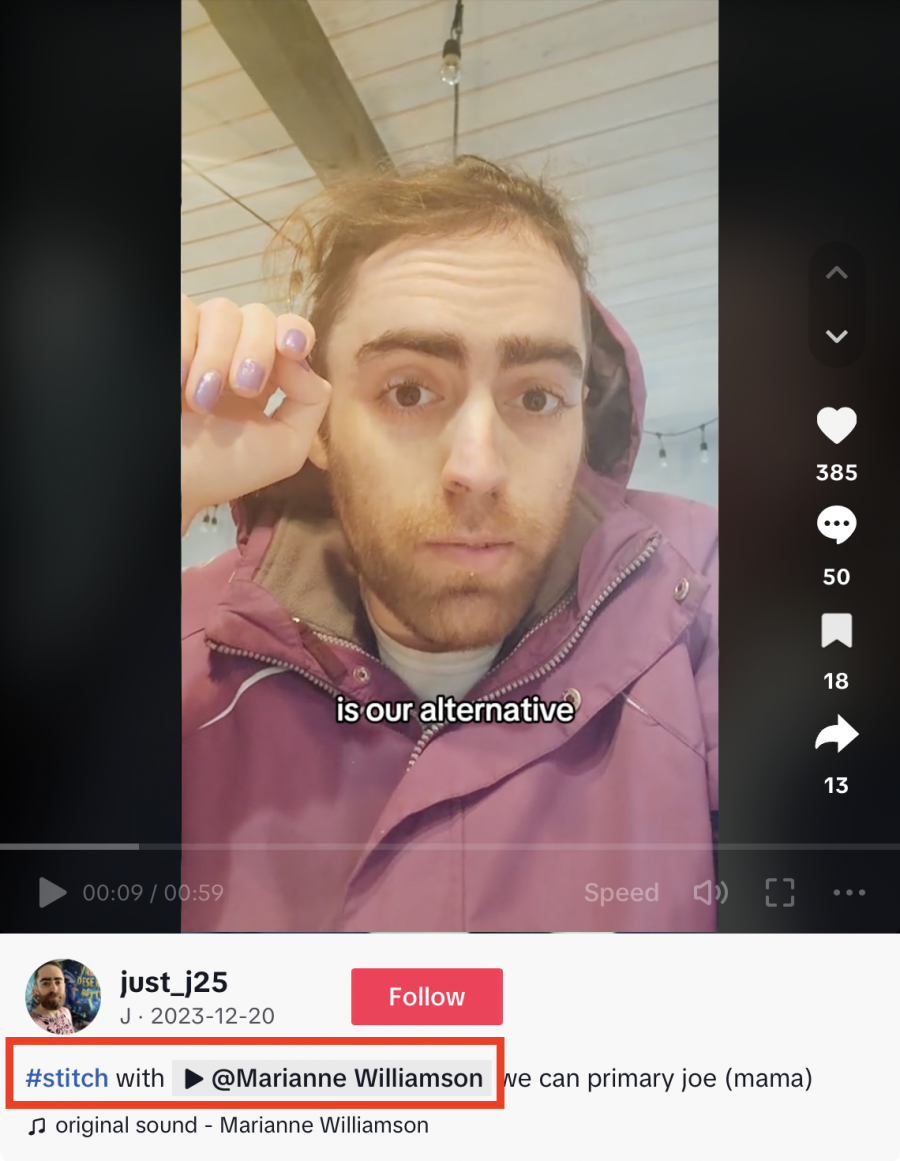
Figure 3 - Stitch video of @just_j25 on TikTok
In this video, user @just_j25 is seen affirming the claim and stating that she is an alternative candidate. He continued to praise the policies that Marianne Williamson is advocating and encouraged people to vote for her (@just_j25, 2023). This entextualization significantly amplifies Marianne Williamson's assertion of being an alternative candidate, as users on TikTok actively reinforce her claim through metadiscursive recontextualization.
Looking at user @just_j25's TikTok account in Figure 4 below, there is a large amount of videos where he is seen responding to other users' comments regarding the topic of politics and why he will not vote for Joe Biden while defending Marianne Williamson's ideas.
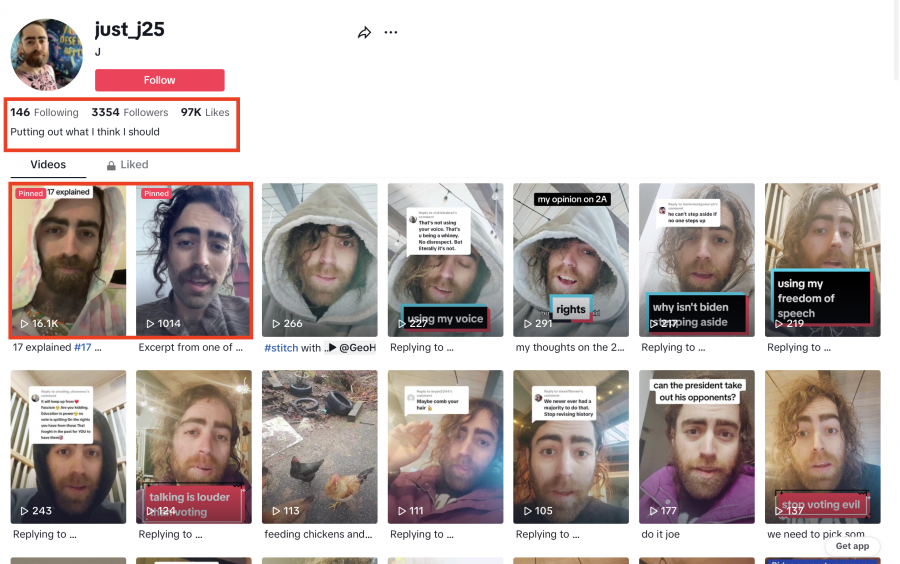
Figure 4 - Screenshot of @just_j25's TikTok account
This user only follows 146 TikTok accounts and Marianne Williamson's is one of them. All this would lead one to believe that this account is organized by Marianne Williamson's campaign team. However, this might not be the case as the username and the account's description do not mention Marianne Williamson's name or her campaign's hashtags. On the other hand, the two pinned video clips of this account do not concern political matters as one discusses numerology and the other is about his book. Figure 5 below shows that user @just_j25 follows Robert F. Kennedy (RFK) Jr. on TikTok.
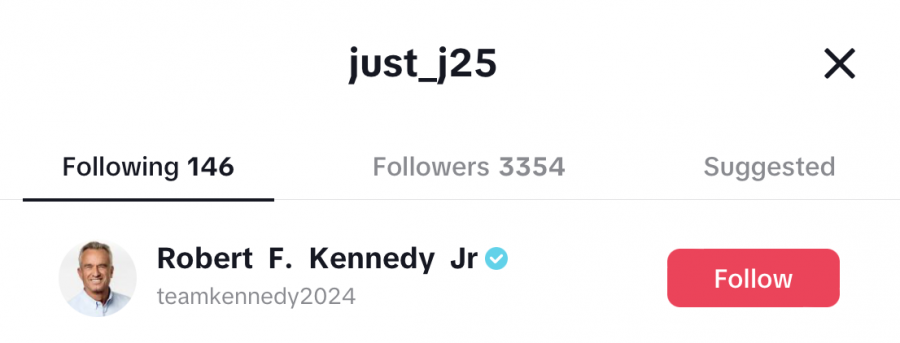
Figure 5 - @just_j25's following list
As RFK Jr. is running for president as well, an account managed by Marianne Williamson's campaign team would not have followed her opponent. This crucial detail along with the ones mentioned above proves that TikTok user @just_j25 genuinely supports Marianne Williamson.
Marianne’s campaign not only gains more visibility from being discovered through hashtags but also engages in a discursive battle for meaning
Additionally, within the TikTok videos, she makes use of different hashtags, thumbnails, and captions to spread her political discourse. Apart from hashtags like #DisruptTheCorrupt, #ANewBeginning, and #Democrat that are consistently used throughout her campaign, Marianne Williamson only started using the “Biden” hashtag recently. This specific hashtag can be seen on her Instagram as well. By taking up this new hashtag, Marianne Williamson’s campaign not only gains more visibility from being discovered through hashtags but also engages in a discursive battle for meaning.
In a discursive battle for meaning, through political discourse, politicians fight to normalize their ideas and convince audiences that their perspectives on society are right (I. Maly, personal communication, August 31, 2023). To get more visibility for her social media campaign, she positions herself as the perfect alternative to Joe Biden in the coming election. She aims at discrediting the sitting president and the Democratic Party for dismissing Biden’s challengers in primary ballots, thus minimizing their chances of being nominated by the Party. This can be seen through her multiple tweets.
For instance, in a tweet posted on Dec 1, 2023 (see Figure 4), Marianne Williamson claimed that voting for Biden is not the only option to preserve Democratic values, hinting that she is an option (Williamson, 2023g).
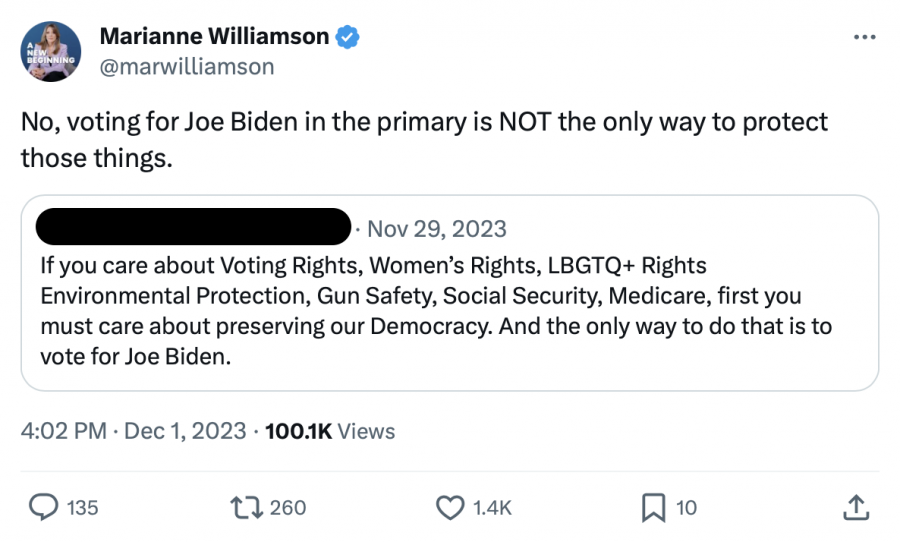
Figure 6 - Marianne Williamson on X
However, people did not seem to agree with her and it shows in many comments saying “Yes, it is” in response to her “No” tweet (see Figure 5).
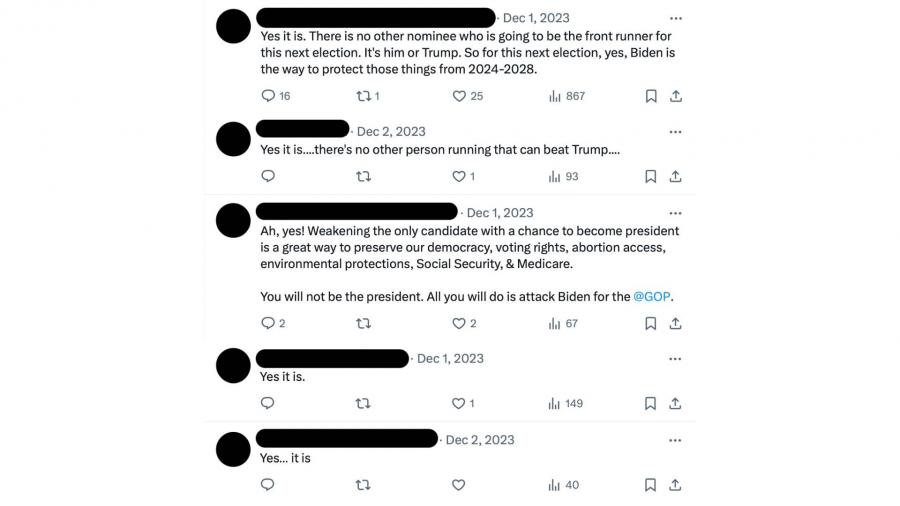
Figure 7 - Comments on Marianne Williamson's tweet
The majority of users commenting in the tweet above imply that they would vote for Biden rather than create an opportunity for Trump to win. Although Marianne Williamson is surging in polls, even her supporters doubt that she will make it in the election (Henao, 2023).
Marianne Williamson’s social media campaigns also use screenshots as images for their discursive battle. On Instagram, she posted a picture (see Figure 6) that was screen-captured from X, showing positive poll results within the Democratic Party along with a sarcastic caption mocking major news organizations such as the New York Times, CNN, and MSNBC for not taking her campaign seriously (Williamson, 2023a)
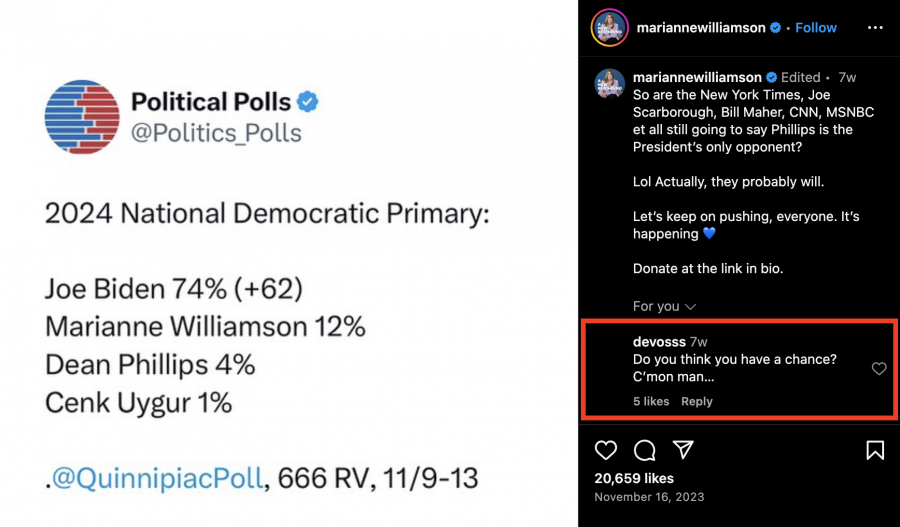
Figure 8 - Marianne Williamson's Instagram Post
By updating people with the latest poll results and showing how well she is campaigning despite the challenges, Marianne Williamson not only succeeds at criticizing mainstream media but also demonstrates the political persona of an "outsider" politician.
It is indeed that she and her progressive ideas are very popular among young people on TikTok, however, the uptakes on Instagram and X say otherwise. In Figure 6 above, the top comment reads “Do you think you have a chance? C’mon man…” (@devosss, 2023), showing that people are skeptical at her chance of winning the election.
Another example is her TikTok post (see Figure 7), where Marianne Williamson also showed a screenshot of a tweet from X.
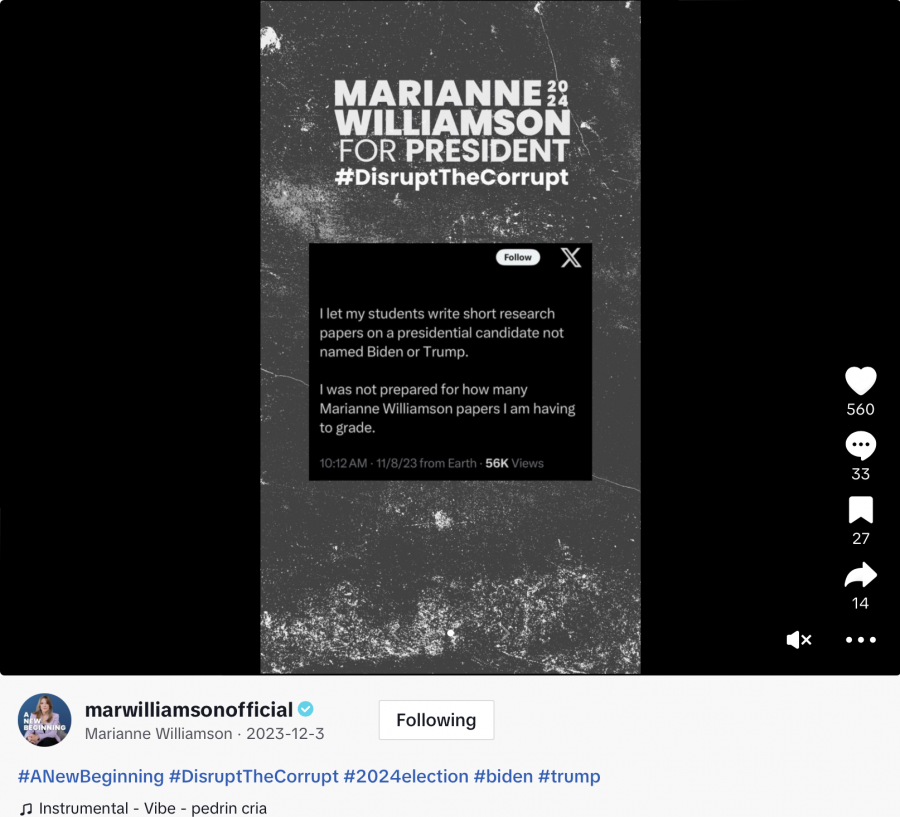
Figure 9 - Marianne Williamson on TikTok
The screenshot says “I let my students write short research papers on a presidential candidate not named Biden or Trump. I was not prepared for how many Marianne Williamson papers I am having to grade” (Williamson, 2023f). By sharing this screenshot on TikTok, Marianne Williamson showcases how she is well-perceived by audiences.
Conclusion
As disadvantaged as she is without much press coverage, Marianne Williamson is still on message and produces a consistent image of herself and her perspectives through time. By understanding the platforms and the algorithms, she knows what type of content to produce on different platforms to be seen online. On TikTok, Marianne Williamson focuses on short-form video clips with thought-provoking captions regarding progressive ideas to attract young voters’ support. In these videos, she appeared unfiltered and authentic, calling out the corrupted system.
It is important to note that all of her video content is reused across different channels, boosting even more visibility. The interactions from fan accounts as well as supportive discourse from audiences imply that the media and public are crucial in delivering Marianne Williamson’s political message. Overall, the article highlights how effectively Marianne Williamson uses social media and its affordances to fight for attention. The result is that she and her political discourse on democracy are heard. While the examples included in this article can only hope to give a glimpse at how Marianne Williamson’s social media strategy is laid out in general, her authenticity and strong presence on TikTok in particular might be something politicians can adopt to get their message across young voters.
References
@just_j25. (2023, December, 20). #stitch with @Marianne Williamson we can primary joe (mama) [Video]. TikTok.
ABC News. (2023, September 27). What to know about Democratic presidential candidate Marianne Williamson. ABC News
Blommaert, J. (2020). POLITICAL DISCOURSE IN POST-DIGITAL SOCIETIES. Trabalhos Em Lingüística Aplicada, 59(1), 390–403.
Bond, B., (2017, April 16). Rules for Revolutionaries: How big organizing can change everything | The Journal of Wild Culture.
Chadwick, A. (2017). The hybrid media system. In Oxford University Press eBooks.
Henao, L. A. (2023, November 12). Marianne Williamson presses on with against-the-odds presidential run | AP News. AP News.
Lempert, M., & Silverstein, M. (2012). Creatures of politics: media, message, and the American presidency.
Looker, R. (2023, July 7). Student debt, reparations and the environment: Marianne Williamson campaigns to end “status quo.” USA TODAY.
Mahdawi, A. (2023, April 29). Quirky, kooky, a joke . . . but why is Marianne Williamson so popular with the young? The Guardian.
Marianne Williamson 2024 | Official Presidential Campaign website. (n.d.). Marianne 2024. Website.
Meet Marianne Williamson | Marianne 2024. (n.d.-b). Marianne 2024.
Nichols, J. (2023, November 22). Marianne Williamson is polling just as well against Biden as Nikki Haley is against Trump | The Nation. (2023, November 27). The Nation.
Silverstein, M. (2003). Talking Politics: The Substance of Style from Abe to “W.”
Van Dijck, J. (2013). The culture of connectivity. A critical history of social media. Oxford University Press, Incorporated
Williamson, M., [@mariannewilliamson]. (2023a, November 16). So are the New York Times, Joe Scarborough, Bill Maher, CNN, MSNBC et all still going to say Phillips is [Photograph]. Instagram.
Williamson, M., [@marwilliamsonofficial]. (2023b, October 29). #DisruptTheCorrupt #Election2024 #Democrat #Progressive #PoliticsTikTok [Video]. TikTok.
Williamson, M., [@marwilliamsonofficial]. (2023c, November 30). Support the campaign at the link in bio. #marianne2024 #MarianneWilliamson #Election2024 #DisruptTheCorrupt #presidentialprimaries #democrat [Video]. TikTok.
Williamson, M., [@marwilliamsonofficial]. (2023d, November 19). One of the most difficult parts of running for President is getting onto the ballots in all 50 states [Video]. TikTok
Williamson, M., [@marwilliamsonofficial]. (2023e, July 1). America’s resources should not be spent on making the richest corporations richer, America’s resources should be spent on helping people [Video]. TikTok.
Williamson, M., [@marwilliamsonofficial]. (2023f, December 3). #ANewBeginning #DisruptTheCorrupt #2024election #biden #trump [Video]. TikTok.
Williamson, M., [@marwilliamson]. (2023g, December 1). No, voting for Joe Biden in the primary is NOT the only way to protect those things [Tweet]. X.